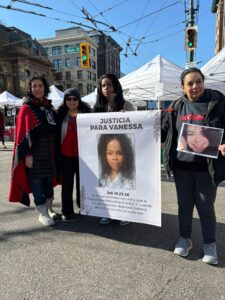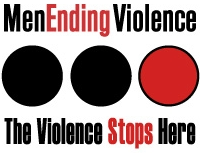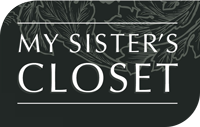60 Barriers to Leaving: Why Survivors Stay and What Systems Must Change
Adapted and expanded from Sarah M. Buel’s “Fifty Obstacles to Leaving, a.k.a. Why Abuse Victims Stay,” updated through a BWSS feminist, decolonial, and trauma- and violence-informed lens – 2025.
I. Structural & Systemic |
II. Social & Relational |
III. Cultural & Institutional |
IV. Intersectional & Environmental |
V. Geographic & Political |
VI. Systemic & Global
I. Structural and Systemic Barriers
1. Lack of Advocacy and Navigation Support
Without strong, informed advocates, survivors navigate legal, housing, income, child protection, and immigration systems alone—complex and retraumatizing.
2. Abuser’s Power and Influence
When abusive partners hold wealth, status, or community power, they manipulate institutions and intimidate survivors and advocates.
3. Credible Threats and Fear of Lethal Violence
Leaving increases danger. Fear is not weakness; it’s an accurate risk assessment where most femicides occur during or after separation.
4. Concern for Children’s Well-Being
Survivors may stay believing two-parent homes are safer. Witnessing violence is itself harm.
5. Children’s Pressure and Emotional Manipulation
Abusive partners use children as leverage—turning them into messengers or emotional hostages to force reconciliation.
6. Cultural, Racial, and Community Pressures
Survivors of colour, Indigenous women, and migrants face racism in systems and pressure not to “betray” community by reporting to colonial or white-dominated institutions.
7. Minimization and Denial
Gaslighting, cultural conditioning, and systemic disbelief cause survivors to question danger or downplay violence.
8. Disability and Accessibility Barriers
Inaccessible housing, shelters, and transit—plus ableism in health and justice systems—block safety.
9. Older Age and Dependency
Elders may fear institutionalization, poverty, or isolation more than continued abuse where ageism intersects with dependency.
10. Acceptance of Excuses
When communities excuse violence as stress, substance use, or “anger issues,” survivors internalize those narratives.
11. Family or Community Pressure
Families may urge reconciliation for appearances, cultural reputation, or finances.
12. Fear of Retaliation
Threats to harm, stalk, or kill survivors or children are credible. Leaving without protection can be fatal.
13. Fear of Losing Children
Abusive partners weaponize custody. Courts often mislabel violence as “conflict,” granting access to abusers.
14. Economic and Financial Control
Withholding money, sabotaging work, or coercing debt maintains power and control.
15. Economic Insecurity After Leaving
Separation brings housing shortages, job loss, and inadequate income support—pushing many back.
16. Feelings of Obligation or Gratitude
Abusive partners pose as rescuers or providers, creating guilt and obligation.
17. Guilt and Self-Blame
Systemic victim-blaming reinforces messages that violence is provoked or deserved.
18. Homelessness and Housing Scarcity
Without safe, affordable housing, survivors face homelessness, couch-surfing, or returning to abuse.
19. Hope and the Cycle of Promises
Apologies, gifts, and promises in the “honeymoon phase” sustain false hope and confusion.
20. Isolation from Support Networks
Abusive partners sever social and professional ties, blocking access to help and housing.
II. Social and Relational Pressures
21. Pressure to Preserve the Family
Expectations of being a “good partner” or “good mother” pressure survivors to stay for appearances or stability.
22. Barriers to Literacy or Information Access
Limited literacy or digital access blocks understanding of rights and options.
23. Criminalization and Systemic Entrapment
Survivors are arrested for self-defense, poverty-related offenses, or coercion—eroding trust in protection systems.
24. Law Enforcement Collusion or Impunity
When abusers work in law enforcement or the military, survivors face retaliation, disbelief, and cover-ups.
25. 2SLGBTQIA+ Survivors and Systemic Erasure
Queer, trans, and non-binary survivors encounter discrimination, outing, denial of services, and police hostility.
26. Erosion of Self-Worth
Verbal and psychological abuse degrade confidence and autonomy.
27. Emotional Attachment and Love
Love, shared history, and children make leaving emotionally complex.
28. Unsafe Mediation or “Couples Counselling”
Mandated mediation or joint counselling ignores power imbalance and increases risk.
29. Health and Care Dependence
Reliance on abusive partners for medical care, insurance, or physical assistance creates impossible trade-offs.
30. Mental Health Stigma and Institutional Harm
Trauma, depression, or anxiety are weaponized to discredit survivors; punitive systems deepen harm.
III. Cultural and Institutional Entrapment
31. Cognitive or Communication Differences
Survivors with cognitive, developmental, or communication differences face exclusion and lack tailored safety planning.
32. Military and Paramilitary Systems
Institutional loyalty protects abusive partners; reporting risks retaliation or economic loss.
33. No Safe Housing Options
Shelter shortages, discrimination, and restrictive eligibility leave no viable escape routes.
34. Limited Employment Opportunities
Lack of education, training, or childcare locks survivors in low-wage or unsafe jobs.
35. Lack of Information About Resources
Public education on GBV is fragmented and underfunded; many don’t know help exists or fear hidden costs.
36. Criminal Record or Legal Barriers
Coerced offenses or existing records block housing, jobs, and victim services.
37. History of Prior Abuse
Repeated trauma can normalize violence and internalize blame.
38. Distrust of the Legal System
Past failures—being ignored, blamed, or retraumatized—create rational distrust of police and courts.
39. Repeated Promises of Change
Remorse and declarations of reform perpetuate cycles of hope and harm.
40. Religious or Spiritual Pressure
Some leaders prioritize forgiveness over safety, pressuring reconciliation.
IV. Intersectional and Environmental Barriers
41. Rural and Remote Isolation
Limited anonymity, scarce services, and long travel distances increase risk.
42. Strategic Staying for Safety
Remaining can be a deliberate survival strategy to monitor risk or protect children.
43. Educational Institutional Failure
Schools and universities often fail to address dating violence, leaving survivors exposed.
44. Shame and Social Stigma
Blaming narratives sustain silence and isolation.
45. Trauma Bonding
Intermittent kindness amidst abuse creates powerful bonds that mimic attachment and hope.
46. Substance Use and Systemic Exclusion
Coping through use is a trauma response; punitive policies exclude survivors from housing or custody.
47. Youth and Early Relationships
Adolescents are vulnerable to coercion and grooming with few trusted adults to intervene.
48. Transportation and Mobility Barriers
Without safe, affordable transit, survivors cannot reach courts, shelters, or childcare.
49. Lack of Public Awareness that Abuse Is a Crime
Communities still treat IPV as private or mutual—rather than a public-safety issue.
50. Immigration Status and State Control
Abusers weaponize immigration—threatening deportation, withholding documents, exploiting sponsorship dependence.
V. Geographic and Political Barriers
51. State Harm and Institutional Retaliation
Survivors face surveillance, punishment, and child removal through systems that reproduce patriarchal and colonial control.
52. Digital Surveillance and Technology-Facilitated Abuse
Spyware, GPS, smart devices, and online harassment erode privacy and safety.
53. Climate and Housing Displacement
Wildfires, floods, and displacement increase exposure to violence in temporary or precarious housing.
54. Colonial Violence and Loss of Land-Based Safety
Indigenous survivors face overlapping harms from partners and the colonial state that dismantled kinship protections.
55. Service Scarcity and Funding Injustice
Chronic underfunding of women’s and community-based services leaves survivors without consistent supports.
56. Structural Stigma in Health and Substance-Use Systems
Institutions pathologize survivors instead of addressing violence—leading to coerced treatment and loss of autonomy.
57. Migrant and Refugee Precarity
Exploitative labour, precarious status, and international custody barriers tie safety to immigration outcomes.
58. Cultural Gaslighting and Public Disbelief
A culture that doubts survivors and excuses abusive partners keeps violence invisible.
59. Community Complicity and Bystander Inaction
Friends, employers, neighbours, and professionals may see warning signs but fail to intervene due to fear, stigma, or normalization.
60. Resistance, Survival, and the Cost of Safety
Even acts of self-protection are punished. Surviving becomes political labour in systems that treat safety as conditional.
“Survivors don’t fail to leave — systems fail to create the conditions where safety is possible.”
From Individual Choice to Collective Responsibility
Every barrier reflects structural neglect, economic inequality, colonial violence, and gendered power—not survivors’ choices.
Safety is not achieved by escape alone; it is built through public investment, cultural transformation, and accountability at every level.
Ending gender-based violence requires dismantling the conditions that make surviving the only option.
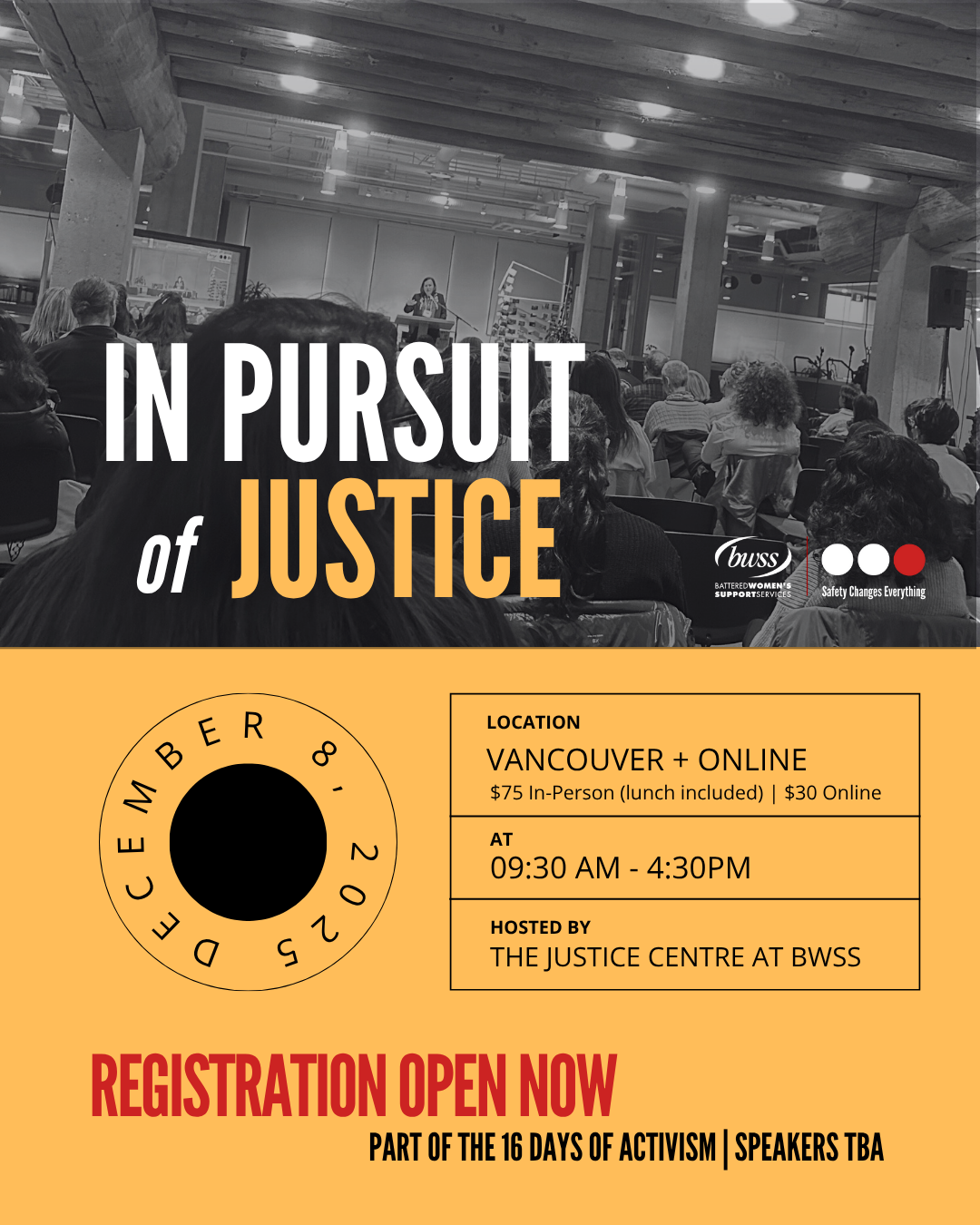






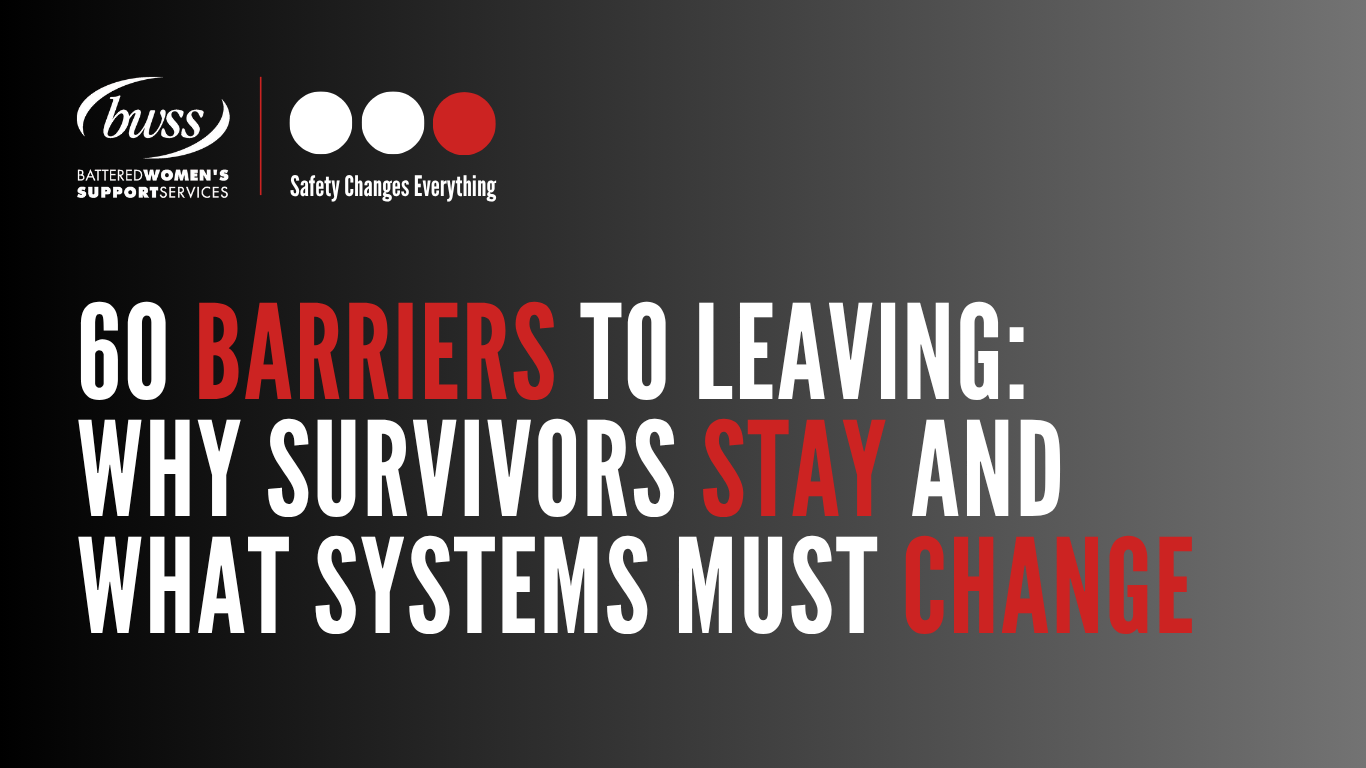
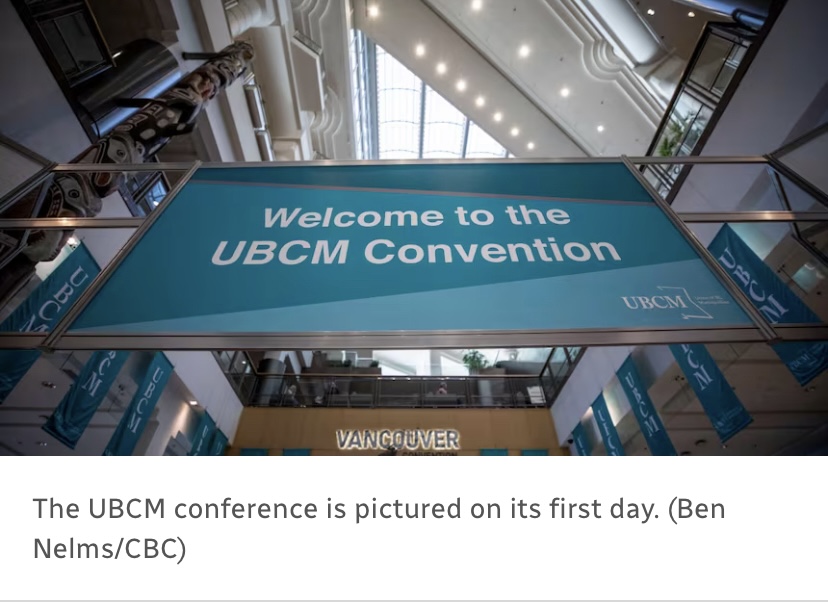
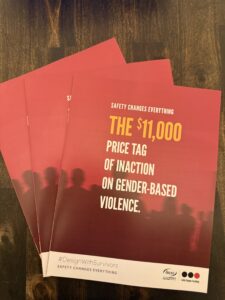 “We came out of UBCM encouraged,” said Angela Marie MacDougall, Executive Director of BWSS. “Municipal leaders across the province are picking up this work and are taking action in their communities. The opportunity now is for every level of government to act – not with declarations, but with the coordinated, resourced interventions that will save lives.
“We came out of UBCM encouraged,” said Angela Marie MacDougall, Executive Director of BWSS. “Municipal leaders across the province are picking up this work and are taking action in their communities. The opportunity now is for every level of government to act – not with declarations, but with the coordinated, resourced interventions that will save lives.
